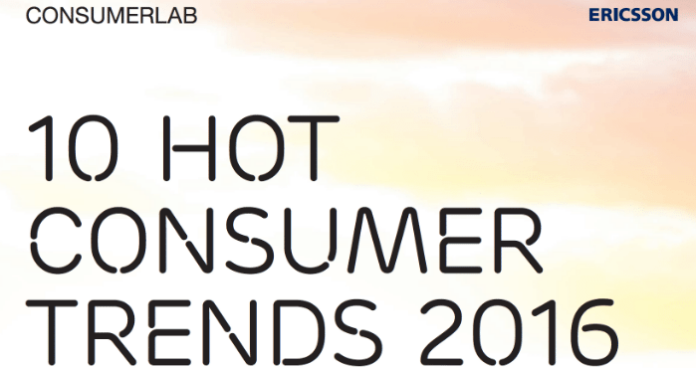Streaming, virtual reality, networked lifestyle and sensing homes are just some of the hot tech trends Ericsson’s research branch ConsumerLabs is looking out for in 2016.
The Ericsson Consumer Insight Summary Report, compiled by the Swedish telecom equipment vendors ConsumerLabs division, is representative of 1.1 billion people in 24 countries at the most broad, and 46 million urban smartphones users in 10 major cities at the most narrow, according to the company.
The list is styled as a top 10 affair, but for our purposes, we’re going to take a look at just a few of the predictions.
Sensing homes – smart home is one of the first consumer-facing “Internet of Things” segments to gain traction with consumers with products like Nest learning thermostats or carrier AT&T’s Digital Life suite, which includes a thermostat, smart lighting, water sensing and security cameras all rolled into a slick app.
According to ConsumerLabs, the next step in the growth arc is to physically imbue homes with connectivity that’s currently added later.
“Bricks may be the new building blocks of the Internet,” the report noted. “Furthering the idea of the ‘Internet of Things,’ sensors could be integrated into bricks and mortar in your house, literally connecting your home from the ground up. fifty-five percent of smartphone users believe that within only five years, their own homes will have embedded sensors that look for construction errors, mold buildup, water leaks and electricity issues. This means we may have to fundamentally rethink the concept of a smart home, where the Internet is every bit as intrinsic to the home as water pipes and electrical wiring. Construction companies will be the builders of Internet infrastructure.”
So once our homes are IoT hubs from the ground up, you’d expect high levels of connectivity in every other aspect of your life. ConsumerLabs calls that the “lifestyle network effect. By using the Internet, we are becoming increasingly interconnected with others. In our broadest survey covering 24 countries, four out of five people now experience a lifestyle network effect, where an individual’s benefit from a range of online services increases as more people use them. Thanks to the Internet, this network effect happens to almost all new products and services simultaneously, and our research indicates that the accumulated value gets aggregated on a lifestyle level.”
And as everything around us becomes connected, that means that everything around us becomes vulnerable to cyberattacks.
“With over 3.2 billion users, the Internet has a massive and instantaneous global reach,” the report stated. “Unfortunately, this also means that we are becoming vulnerable to cyberattacks such as viruses and hacking, often highlighted in the news. Consequently, the majority of smartphone users believe a range of organizations, products and services will be hacked or become infected by a virus in the near future. Eighteen percent say their trust in an organization, product or service is reduced when it’s been hacked. Around two-thirds believe that PCs, smartphones and social networks will continue to be exposed, whereas only 21% see the risk of such issues with kitchen appliances in the near future.”

